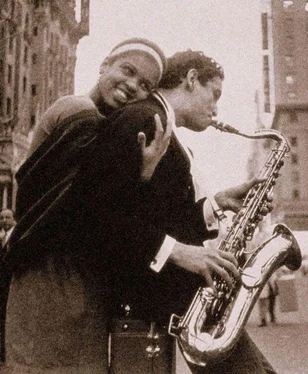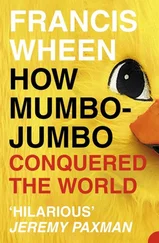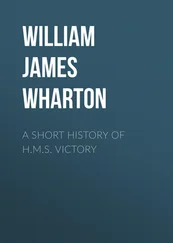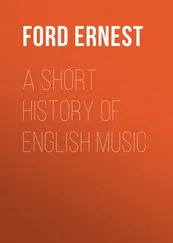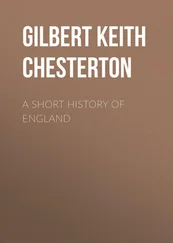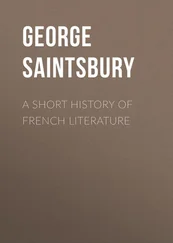Michael Morangelli - Jazz - A Short History
Здесь есть возможность читать онлайн «Michael Morangelli - Jazz - A Short History» весь текст электронной книги совершенно бесплатно (целиком полную версию без сокращений). В некоторых случаях можно слушать аудио, скачать через торрент в формате fb2 и присутствует краткое содержание. Жанр: Классическая проза, на английском языке. Описание произведения, (предисловие) а так же отзывы посетителей доступны на портале библиотеки ЛибКат.
- Название:Jazz: A Short History
- Автор:
- Жанр:
- Год:неизвестен
- ISBN:нет данных
- Рейтинг книги:3 / 5. Голосов: 1
-
Избранное:Добавить в избранное
- Отзывы:
-
Ваша оценка:
- 60
- 1
- 2
- 3
- 4
- 5
Jazz: A Short History: краткое содержание, описание и аннотация
Предлагаем к чтению аннотацию, описание, краткое содержание или предисловие (зависит от того, что написал сам автор книги «Jazz: A Short History»). Если вы не нашли необходимую информацию о книге — напишите в комментариях, мы постараемся отыскать её.
Jazz: A Short History — читать онлайн бесплатно полную книгу (весь текст) целиком
Ниже представлен текст книги, разбитый по страницам. Система сохранения места последней прочитанной страницы, позволяет с удобством читать онлайн бесплатно книгу «Jazz: A Short History», без необходимости каждый раз заново искать на чём Вы остановились. Поставьте закладку, и сможете в любой момент перейти на страницу, на которой закончили чтение.
Интервал:
Закладка:
But, it’s still not Jazz - yet.
5 The Birth of Jazz
Last month I felt I had covered all the background that was necessary to discuss the accepted start of Jazz in New Orleans at the turn of the century. After 4 articles, and the research associated with them, the actual writing had become routine. Starting this month’s article - I thought - would be just the same.
It was not. First, the material I had on hand was very light on the specifics of the period; second, I had only a few cuts of what was supposed to be New Orleans Dixieland (as opposed to the Chicago style), and lastly, I could not focus on a particular artist’s work for epitomizing the era. This article became difficult; but the mentioned reasons were not enough to diagnose a writers block - so I pulled out an old book (“A Pictorial History of Jazz”, Orrin Keepnew amp; Bill Grauer, Crown Publishers, Inc, 1966). I’m glad I did.
The hard part about writing a historical perspective (for me) is getting caught up in facts - but Jazz is not about facts, it is about people and the times they lived in. Looking at the pictures in this book put a human face to the words I had written and the facts I had researched. The deck of a slave ship, the sale of slaves after landing, streets with no cars, a view of the riverfront in New Orleans with clearly visible Paddle Wheel Steamers - all reiterating a ‘picture is worth a thousand words’. The reality of reading about historical facts and the danger of interpreting and imagining with a modern ‘minds eye’ does often distort our perspective, for what I saw was a society and musical environment far different from mine.
The pictures of the early New Orleans bands are most striking to me. There is one of Buddy Bolden taken before 1895. Much has been written about him - he is the musician (Trumpet) with whom Stearns starts his discussion of New Orleans Jazz. They are posed in dark suits and bow ties - not much different from today.
There are also two pictures - one of the Original Superior Orchestra (with Bunk Johnson) and the Imperial Band (with Manuel Perez) in uniforms - almost as if they took the picture before a street ‘gig’. It was here that these pictures became a window into their time and place In picture after picture, what I felt and saw in my ‘minds eye’ were people - people who lived, played music, worked hard to make a living, and had no idea they were making Jazz History. One aspect however is missing. The sounds of the bands and the people and the city. The names had no sounds linked to them: • Buddy Bolden, Willie Cornish, Frank Lewis, Frankie Duson, Bunk Johnson, Louis Nelson, Manuel Perez, Paul Barbarin, Luis Russell, Albert Nicholas, Peter Bocage, Lorenzo Tio,Jr., Oscar “Papa” Celestin, Jimmy Noone, John Lindsey, Johnny St. Cyr, Buddy Petit, Zue Robertson, Armand J. Piron, Louis Cotrelle, Freddie Keppard, Adie Venson, George Baquet, Bill Johnson, Dink Buddy Bolden Superior Band Johnson, Jimmie Palao, Norwood Williams, Sidney Bechet, Joe Oliver, Baby Dodds, Honore Dutray, Louis Armstrong, Fate Marable, Johnny Dodds, Pops Foster, Bill Ridgeley, Dave Jones, Joe Howard, Kid Ory, Mutt Carey, Ed Garland. just faces staring back from the page. Yes, some were eventually recorded later on but by then the music of Early New Orleans had already been influenced by the Chicago Dixieland style. What we know about this period is through reminiscences by the musicians who lived through it - it is the last era with no contemporary sound recordings (first jazz recording was done in 1917).
These people were working musicians and I felt an affinity for who they were and what they did. I think I would feel comfortable with them as I do with anyone I play music with today. The recording industry and the public had not created superstars - though some were. They were people playing the music they knew and loved - trying to make some income while doing it. I doubt if they thought about and analyzed this music as we do - I am sure they studied it - but for them, Jazz History was not yet a subject for study, they were writing the first chapter.
Sterns states the dates for New Orleans Dixieland as 1900 - 1917 and as a music which we would recognize as jazz. It was here, that the: “over-all direction switched from European Elements dominating African elements to European Elements being influenced by a new combination dominated by African Elements”
The influences of French, Spanish, and British music continued to be a part of this new music. The melodies and rhythms of the popular songs of the day were a standard part of the repertoire. The execution of this style had some universal characteristics - The Cornet/Trumpet played the melody line with allowed embellishments (but not to obscure the melodic line), the clarinet played a harmony line above the melody and rhythmically created momentum within the ensemble, the Trombone played the most important note in the current chord change, the rhythm section consisted of banjo, tuba, and drums. This particular instrumentation lent itself well to both outdoor marching events and concerts/dances - not much different in function from the standard Septet format.
In conception, it was much different (in my opinion) than our modern jazz one. The rhythm section played a ‘flat four’ rhythm - four unaccented beats to the bar. This made it very close to the European March Rhythm and the 2 amp; 4 accent of the typical Jazz pulse is still absent. The Front Line (Cornet, Clarinet, amp; Trumpet) conceived their parts horizontally through the harmonic content of the particular tune. The typical performance practice was ensemble chorus, solo choruses, and a return to the ensemble chorus. This ensemble chorus was not strictly constructed through improvisation over the melody but often contained patterns which crept into the tunes through common practice - but the effect was a collective improvisation with great rhythmic complexity among the Front Line players.
The bands themselves varied greatly in sound - depending on the players available for any particular engagement and according to the dictates of the particular job and the audience present. As such, they often moved between a rough sound or a sweet sound - something which carried through into the Swing Era classification of bands. Also, this music was not an exclusively Afro-American preserve and there were White bands functioning in the same idiom - Pappa Jack Laine for example.
The other musics associated with the birth of Jazz - Blues, Work Songs, Minstrelsy - all contributed to the mix prior to 1900. But, there was still much to be developed before that accented pulse of 2 amp; 4 Eureka Band emerged with Chicago Dixieland. It would be Ragtime (a piano style), the establishment of Storyville by New Orleans Alderman Sidney Story in 1896,and its closing by the Navy in 1917 which set the stage for the Chicago style.
The date 1917 is a pivotal one - both in general history and this jazz history. The country as a whole moved outward with the involvement of WW I - whether we wanted it or not - we changed into a ‘modern’ country in a ‘modern’ era. For Jazz, the first Jazz recording was made by the Original Dixieland Jazz Band during a stint at Reisenweber’s Cafe in New York City. The music played by this group was to name an entire decade - the Jazz Age of the 20’s. So, just about 300 yrs after the first slave were brought to and sold in this country, the music that they had such a great part in creating was recorded - ironically by a white group - and was to be the popular music for the next 40 yrs.
6 The Jazz Age
I’m still browsing the Keepnews Pictorial History of Jazz - I really haven’t looked at in years till I took it out last month. The pictures have a fascination for me…. or maybe I’m seeing with different “eyes”. The section on Chicago Dixieland is in some ways very similar to the previous New Orleans chapter but also, very different. The Instrumentation is still basically the same and 5 pieces seem to be the rule. One striking absence is the lack of String Bass in some of the pictures and the inclusion of an additional low brass - Tuba/Sousaphone in others. Also, the similarities in poses for the publicity photos is notable - as well as the number of indoor shots at the clubs and dance halls.
Читать дальшеИнтервал:
Закладка:
Похожие книги на «Jazz: A Short History»
Представляем Вашему вниманию похожие книги на «Jazz: A Short History» списком для выбора. Мы отобрали схожую по названию и смыслу литературу в надежде предоставить читателям больше вариантов отыскать новые, интересные, ещё непрочитанные произведения.
Обсуждение, отзывы о книге «Jazz: A Short History» и просто собственные мнения читателей. Оставьте ваши комментарии, напишите, что Вы думаете о произведении, его смысле или главных героях. Укажите что конкретно понравилось, а что нет, и почему Вы так считаете.
